James Pang
@jchrispang.bsky.social
NHMRC Emerging Leadership Fellow at the School of Psychological Sciences, Monash University
Physicist/neuroscientist working on neuroimaging and computational models in human and non-human species
Physicist/neuroscientist working on neuroimaging and computational models in human and non-human species
We find highly robust correspondence between model solutions vs geometric modes and model parcs vs geometric parcs, demonstrating that the reaction-diffusion process may represent a conserved developmental mechanism for establishing the regional organization of the brain. (12/n)

February 3, 2025 at 12:45 AM
We find highly robust correspondence between model solutions vs geometric modes and model parcs vs geometric parcs, demonstrating that the reaction-diffusion process may represent a conserved developmental mechanism for establishing the regional organization of the brain. (12/n)
We want to go further and provide mechanistic insights into why our geometric parcellations work so well. Hence, we go back to the initial motivation of this study and develop a computational model that mimics the reaction and diffusion of patterning molecules. (11/n)
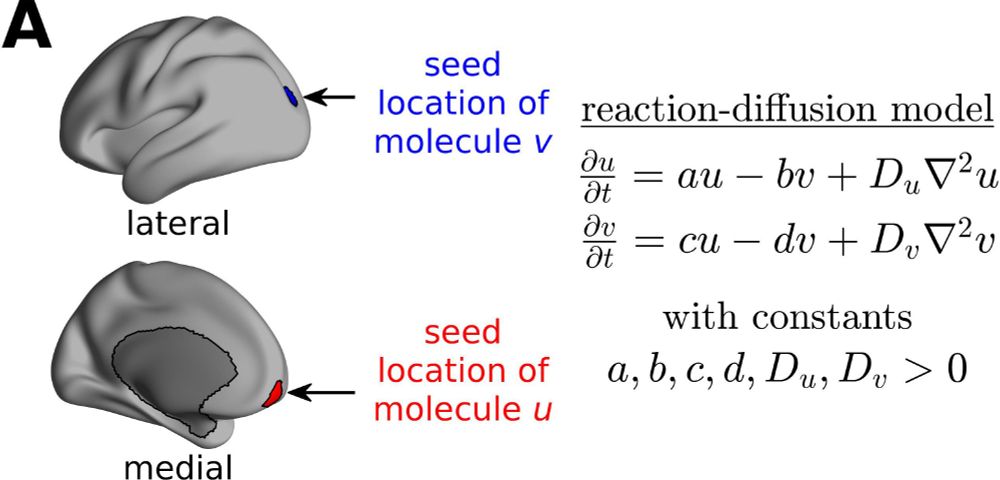
February 3, 2025 at 12:45 AM
We want to go further and provide mechanistic insights into why our geometric parcellations work so well. Hence, we go back to the initial motivation of this study and develop a computational model that mimics the reaction and diffusion of patterning molecules. (11/n)
Fourth, we can even go to the individual level, only needing individual-specific cortical surfaces. (10/n)

February 3, 2025 at 12:45 AM
Fourth, we can even go to the individual level, only needing individual-specific cortical surfaces. (10/n)
Third, the approach and homogeneity results are generalizable to non-neocortical structures such as subcortical and allocortical structures (i.e., HIP, AMY, THA, NAc, GP, PUT, CAU). (9/n)
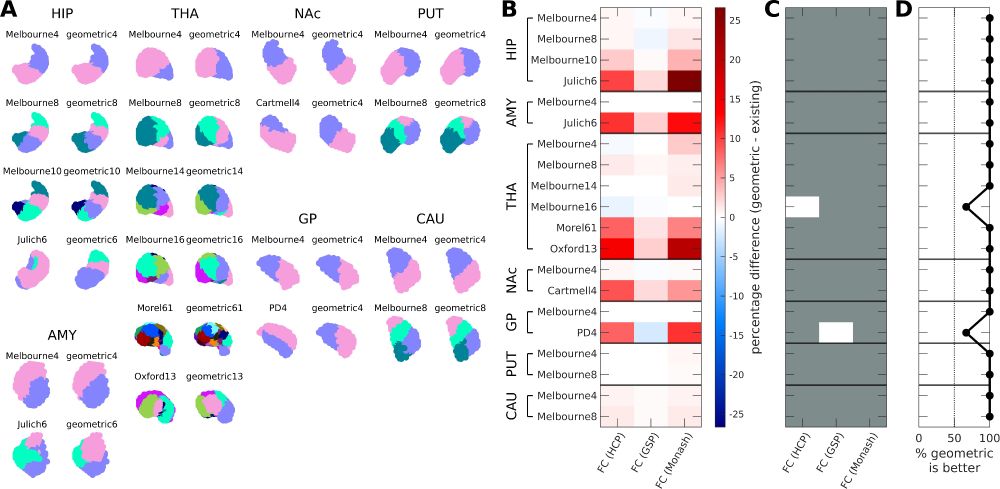
February 3, 2025 at 12:45 AM
Third, the approach and homogeneity results are generalizable to non-neocortical structures such as subcortical and allocortical structures (i.e., HIP, AMY, THA, NAc, GP, PUT, CAU). (9/n)
Second, thanks to the data in the beautiful study of Schwartz et al. (2023, Nat Comms), we show that we can generate parcs for 24 other mammalian species, covering the Primata, Scandentia, Dermoptera, Rodentia, and Lagomorpha orders. Most don't even have parcs to date! (8/n)
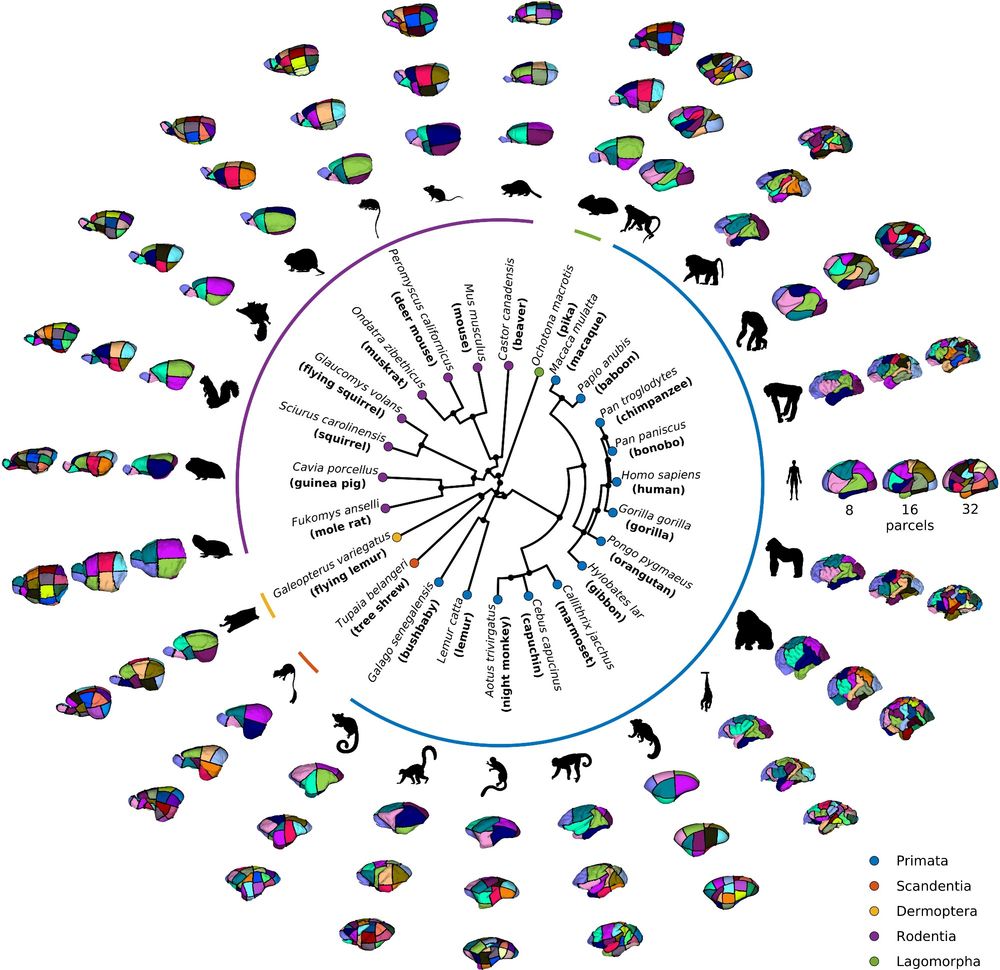
February 3, 2025 at 12:45 AM
Second, thanks to the data in the beautiful study of Schwartz et al. (2023, Nat Comms), we show that we can generate parcs for 24 other mammalian species, covering the Primata, Scandentia, Dermoptera, Rodentia, and Lagomorpha orders. Most don't even have parcs to date! (8/n)
The great thing about our approach is that it only requires T1w MRI, so it is highly generalizable!
First, it is generalizable to mammals (macaque, marmoset, mousse neocortices), with superior homogeneity against 15 existing parcs across 114 FC and non-FC phenotypes. (7/n)
First, it is generalizable to mammals (macaque, marmoset, mousse neocortices), with superior homogeneity against 15 existing parcs across 114 FC and non-FC phenotypes. (7/n)
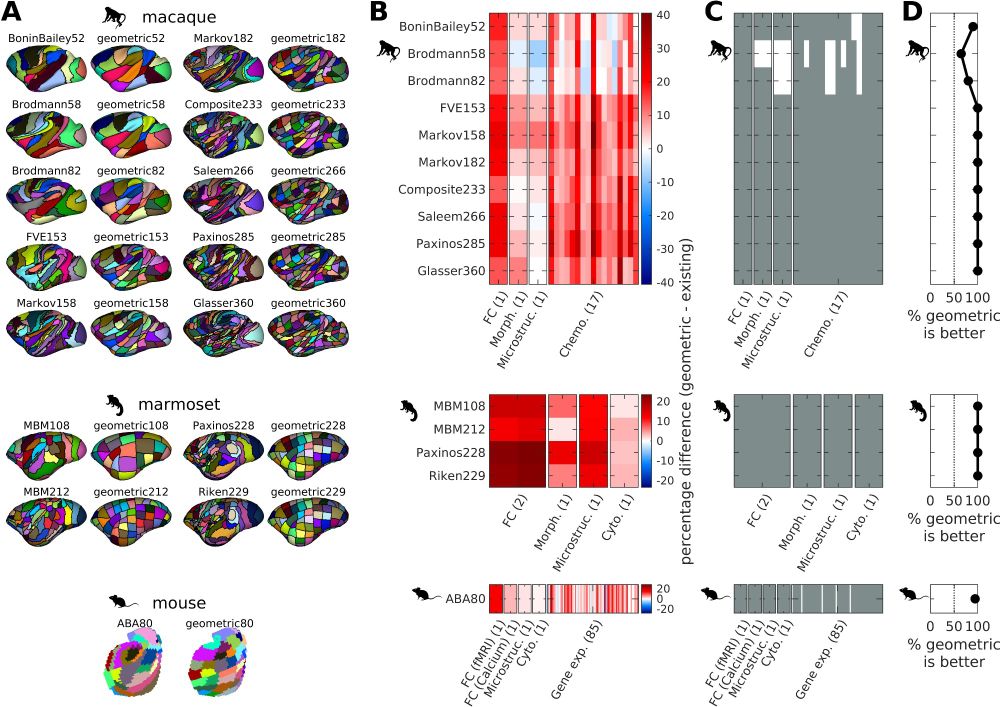
February 3, 2025 at 12:45 AM
The great thing about our approach is that it only requires T1w MRI, so it is highly generalizable!
First, it is generalizable to mammals (macaque, marmoset, mousse neocortices), with superior homogeneity against 15 existing parcs across 114 FC and non-FC phenotypes. (7/n)
First, it is generalizable to mammals (macaque, marmoset, mousse neocortices), with superior homogeneity against 15 existing parcs across 114 FC and non-FC phenotypes. (7/n)
We also find that the homogeneity of the geometric parcs remains superior across 242 non-FC cortical phenotypes, covering diverse properties of morphometry, microstructure, cytoarchitecture, metabolism, gene expression, chemoarchitecture, and fMRI task activations! (6/n)

February 3, 2025 at 12:45 AM
We also find that the homogeneity of the geometric parcs remains superior across 242 non-FC cortical phenotypes, covering diverse properties of morphometry, microstructure, cytoarchitecture, metabolism, gene expression, chemoarchitecture, and fMRI task activations! (6/n)
Focusing first on the human neocortex, we find that the geometric parcs produce regions that are more functionally homogeneous (FC based on 3 independent resting-state fMRI datasets) than those in nearly all 17 cortical parcs commonly used in the field. (5/n)

February 3, 2025 at 12:45 AM
Focusing first on the human neocortex, we find that the geometric parcs produce regions that are more functionally homogeneous (FC based on 3 independent resting-state fMRI datasets) than those in nearly all 17 cortical parcs commonly used in the field. (5/n)
Inspired by this equivalence, we use the geometric eigenmodes (which can be derived directly from T1w MRI) to develop a simple, hierarchical approach for generating a multiscale parcellation of any brain structure. We term as geometric parcellations. (4/n)

February 3, 2025 at 12:45 AM
Inspired by this equivalence, we use the geometric eigenmodes (which can be derived directly from T1w MRI) to develop a simple, hierarchical approach for generating a multiscale parcellation of any brain structure. We term as geometric parcellations. (4/n)
We know that patterning molecules (morphogens) are crucial for areal specification early in development. Interestingly, their expressions align with the rostrocaudal, mediolateral, and dorsoventral axes, corres. to low-order geometric modes. Image from O'Leary et al. (2017) (3/n)
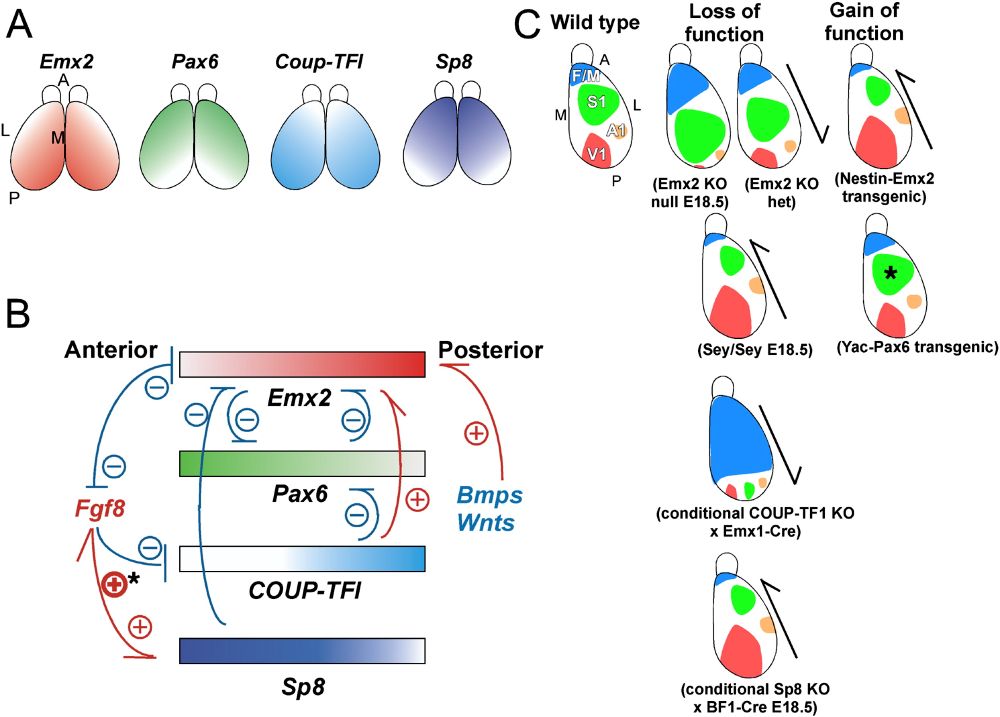
February 3, 2025 at 12:45 AM
We know that patterning molecules (morphogens) are crucial for areal specification early in development. Interestingly, their expressions align with the rostrocaudal, mediolateral, and dorsoventral axes, corres. to low-order geometric modes. Image from O'Leary et al. (2017) (3/n)


